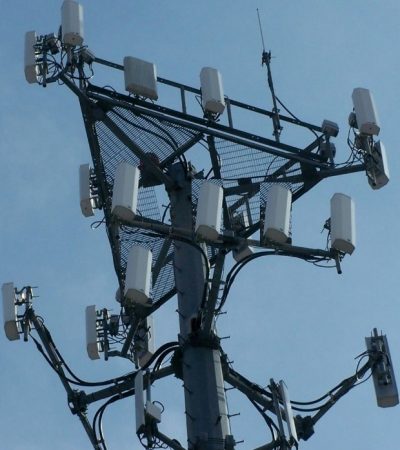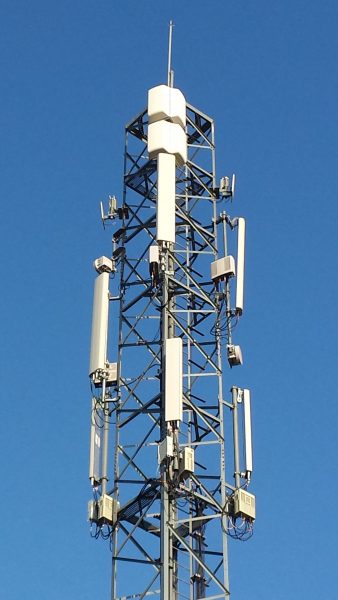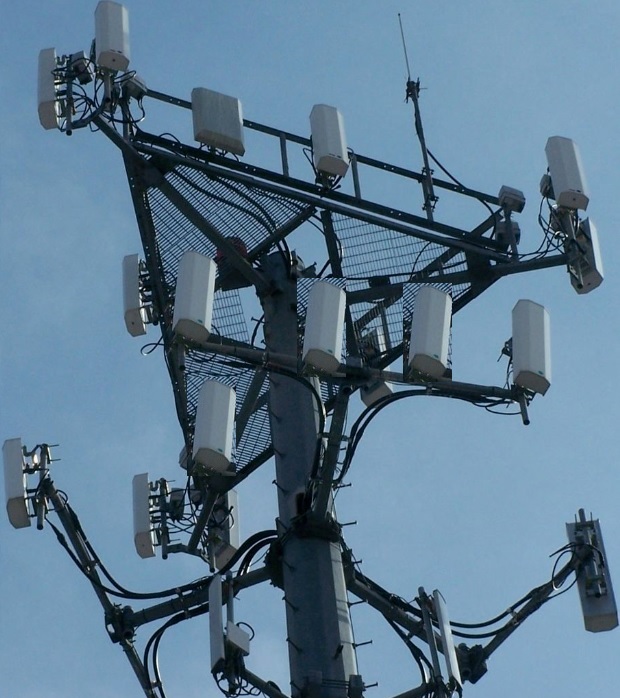Petitions, presentations and the open ears of city councils spearhead movement
BY ERIC VALENTINE

Depending on who you ask, the advent of 5G is either the beginning of a more innovative and connected world or the start of a health risk and privacy hazard for each and every community. Now there’s a local group doing what they can to make sure the excitement for the former won’t reel back vigilance toward preventing the latter.
The group that calls itself Protect The Wood River Valley and has developed the mantra “No 5G In 5B!” has already been collecting petition signatures at 11 Ketchum establishments as well as one in Hailey and one in Bellevue. And on Wednesday, Jan. 22 at 6:30 p.m., at the YMCA in Ketchum, the group will host what they are billing as an “educational meeting” on 5G technology. The event will include a talk by Ryan Blaser of Test My Home who will discuss the environmental and health impacts of 5G.
The event precedes the group’s Ketchum Town Square presence on Jan. 25 to collect more signatures, which will be followed up by a presentation at the Ketchum city council’s Feb. 3 meeting. The group says a Change.org online petition drive is soon coming, too.
“It’s kind of one step at a time. We’re all discovering information as we go and we’re all at different stages of awareness,” said Michelle Sandoz, the group’s main organizer.
Sandoz explained that the overarching goal is twofold:
Place a moratorium on 5G development across the Wood River Valley
Create a so-called 5G-free preserve
If that sounds business unfriendly, Sandoz thinks otherwise.
“Imagine the possibility of people wanting to come to the Valley for a wellness vacation, for example,” Sandoz explained.
Just like the Dark Sky Preserve in place across the Valley, a similar line in the sand—or snow—could be marketed in a way that signals people to spend their vacation time and appreciation for nature here.

How Risky Is It?
Ask an executive at Verizon or T-Mobile about the health risk of 5G and they’ll likely tell you the radiation levels are no different than that of visible light and the radio frequencies we use daily. Ask an anti-5G advocate and they’ll tell you we’re going to receive thousands of times more radiation than we do currently and all living cells are in jeopardy.
“Any time there’s a new technology introduced, there’s always opinions about the safety, even expert opinions and expert studies, but it seems the findings can be different based upon who is funding those studies,” observed Ketchum Mayor Neil Bradshaw.
Nonetheless Bradshaw says the city is open ears to the fledgling group and that the Feb. 3 session will allow residents to present their concerns and dialogue with the council. Bradshaw said it’s also an opportunity for city staff to discuss the legal challenges in front of anyone trying to block the spread of wireless technology.
“We’re looking to hear what the facts are when it comes to health risk and then what if anything we can do about it,” Bradshaw said.
How Legal Is it?
As with assessing health risk, opinions on the law are all over the map, too. That’s why Protect The Wood River Valley is working with James Hungelmann, a Ketchum resident and a senior member of the Idaho Bar who is involved professionally with an organization called The White Room LLC. The organization is imploring local jurisdictions to invoke their right to establish moratoriums on 5G development.
But it’s not that simple. The Federal Communications Commission (FCC) says the 5G rollout is protected by the Telecommunications Act of 1996, which prevents states, counties, cities, and the like from prohibiting interstate or intrastate telecommunications service.
“It’s my opinion that that 25-year-old federal law doesn’t extend to 5G,” says Hungelmann.
That’s because the same law also says states can impose on “a competitively neutral basis” requirements to “protect the public safety and welfare.”
Translation: It all comes back to whether there’s a health risk.
What To Expect
With the recent release of the so-called “International EMF Scientist Appeal” and headlines in recent publications like Scientific American’s October 2019 opinion piece “We Have No Reason to Believe 5G Is Safe,” you can expect someone to sue someone else soon.
In the meantime, Protect The Wood River Valley anticipates more public sessions like the one in Ketchum. At a recent Hailey City Council meeting, several residents wanted to speak about their concerns with 5G. When Mayor Martha Burke saw how many people had concerns, she suggested the city set up time to address the matter more fully.
All this coincides with Burke’s sweeping proposal to establish climate-change policies and initiatives in Hailey, as well as Blaine County’s forming a so-called office of sustainability that assesses environmental sustainability when it comes to purchases, personnel policy, code implementation and other county operations.



